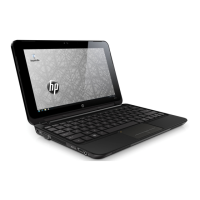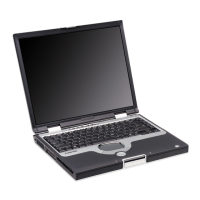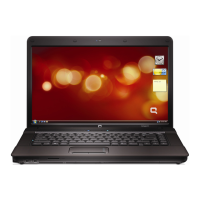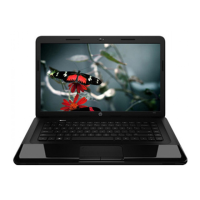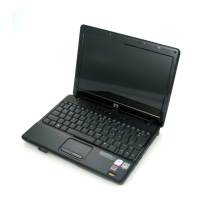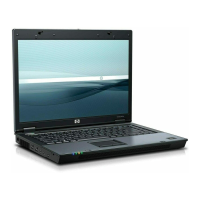
Do you have a question about the HP Compaq 15 and is the answer not in the manual?
| Form factor | Clamshell |
|---|---|
| Product type | Laptop |
| Product color | Black, Grey |
| Country of origin | China |
| Processor cache | 1 MB |
| Processor cores | 2 |
| Processor family | AMD E |
| Processor frequency | 1.35 GHz |
| Processor cache type | L2 |
| Processor manufacturer | AMD |
| Motherboard chipset | - |
| Internal memory | 8 GB |
| Memory clock speed | 1600 MHz |
| Internal memory type | DDR3L-SDRAM |
| Maximum internal memory | - GB |
| Memory layout (slots x size) | 1 x 8 GB |
| HDD speed | 5400 RPM |
| HDD interface | SATA |
| Storage media | HDD |
| Optical drive type | DVD Super Multi |
| Card reader integrated | Yes |
| Total storage capacity | 1000 GB |
| Number of HDDs installed | 1 |
| Display surface | Gloss |
| Display diagonal | 15.6 \ |
| Display resolution | 1366 x 768 pixels |
| Native aspect ratio | 16:9 |
| Discrete graphics card model | Not available |
| On-board graphics card model | AMD Radeon R2 |
| Wi-Fi standards | 802.11b, 802.11g, Wi-Fi 4 (802.11n) |
| Ethernet LAN data rates | 10, 100 Mbit/s |
| Charging port type | DC-in jack |
| USB 2.0 ports quantity | USB 2.0 ports have a data transmission speed of 480 Mbps, and are backwards compatible with USB 1.1 ports. You can connect all kinds of peripheral devices to them. |
| CardBus PCMCIA slots quantity | 0 |
| Operating system installed | Windows 8.1 |
| Operating system architecture | 64-bit |
| Battery capacity | 41 Wh |
| Battery life (max) | - h |
| Number of battery cells | 4 |
| Cable lock slot type | Kensington |
| Sustainability certificates | EPEAT Silver, ENERGY STAR |
| Depth | 260 mm |
|---|---|
| Width | 378 mm |
| Height | 25 mm |
| Weight | 2230 g |
Important safety precautions to prevent injury or damage during device operation.
Details the HP 15 Notebook PC and Compaq 15 Notebook PC models.
Identifies and describes components around the laptop's display.
Details components located on the front side of the laptop.
Identifies components on the right side of the laptop.
Details components on the left side of the laptop.
Describes top-mounted components like the TouchPad and keyboard keys.
Explains the function of various indicator lights on the laptop.
Describes the function and operation of the power button.
Explains the function of different keys and key combinations.
Identifies components located on the bottom of the laptop.
Explains the location and purpose of various labels on the computer.
Lists and illustrates the main internal components of the computer.
Details the parts that make up the display assembly.
Illustrates and lists available mass storage options like HDDs and ODDs.
Shows parts kits for plastic covers.
Shows parts kits for rubber feet.
Lists various small or specific parts for the computer.
Provides a cross-reference of part numbers and descriptions.
Outlines tools, considerations, and guidelines before component replacement.
Step-by-step guide for removing and replacing the laptop battery.
Procedures for removing the entire display assembly and its subcomponents.
Instructions for removing and replacing the optical drive.
Detailed steps for removing and reinstalling the laptop keyboard.
Guide for removing and replacing the laptop's top cover assembly.
Steps to remove and replace the power button board.
Guide for removing and replacing the TouchPad button board.
Instructions for removing and replacing the laptop's hard drive.
Steps to remove and replace the wireless LAN module.
Procedure for removing and replacing the internal cooling fan.
Guide for removing and replacing the power connector cable.
Instructions for removing and replacing the main system board.
Steps to remove and replace the USB interface board.
Guide for removing and replacing the laptop speakers.
Procedure for removing and replacing the heat sink assembly.
Steps to remove and replace the real-time clock battery.
Guide for removing and replacing RAM modules.
How to access and start the BIOS setup utility.
Information on obtaining and installing BIOS updates.
Method to check the current BIOS version installed.
Steps to download BIOS update files from HP.
Guide to running hardware diagnostic tests.
Instructions for creating a bootable USB for diagnostics.
How to access and start the BIOS setup utility in Windows 7.
Information on obtaining and installing BIOS updates.
Method to check the current BIOS version.
Steps to download BIOS update files.
Guide to running system diagnostic tests.
How to access the BIOS setup in SUSE Linux.
Navigating and making selections within the BIOS setup.
Steps to reset BIOS settings to factory defaults.
Information on BIOS updates for Linux.
Method to check the current BIOS version.
Steps to download BIOS updates for Linux.
Running hardware diagnostics in SUSE Linux.
Detailed technical specifications for the laptop's hardware.
Technical details for the laptop's display panel.
Technical details for the various hard drive options.
Technical details for the DVD±RW SuperMulti DL Drive.
Steps to create recovery media and system backups.
Guide on using HP Recovery Manager to create media.
Overview of system recovery methods and options.
How to restore using the built-in recovery partition.
Steps to restore using created recovery media.
How to modify boot order for recovery media.
Instructions for removing the recovery partition.
General steps for creating system and file backups.
Guide to creating recovery discs or flash drives.
How to create and use system restore points.
Strategies for backing up important data.
Procedures for restoring system and files.
Steps for backing up files in SUSE Linux.
How to restore the system to its factory state in SUSE Linux.
General requirements for power cord sets globally.
Country-specific power cord requirements and certifications.
Guidelines for the proper disposal of batteries.
Instructions for safely disassembling and recycling display components.

